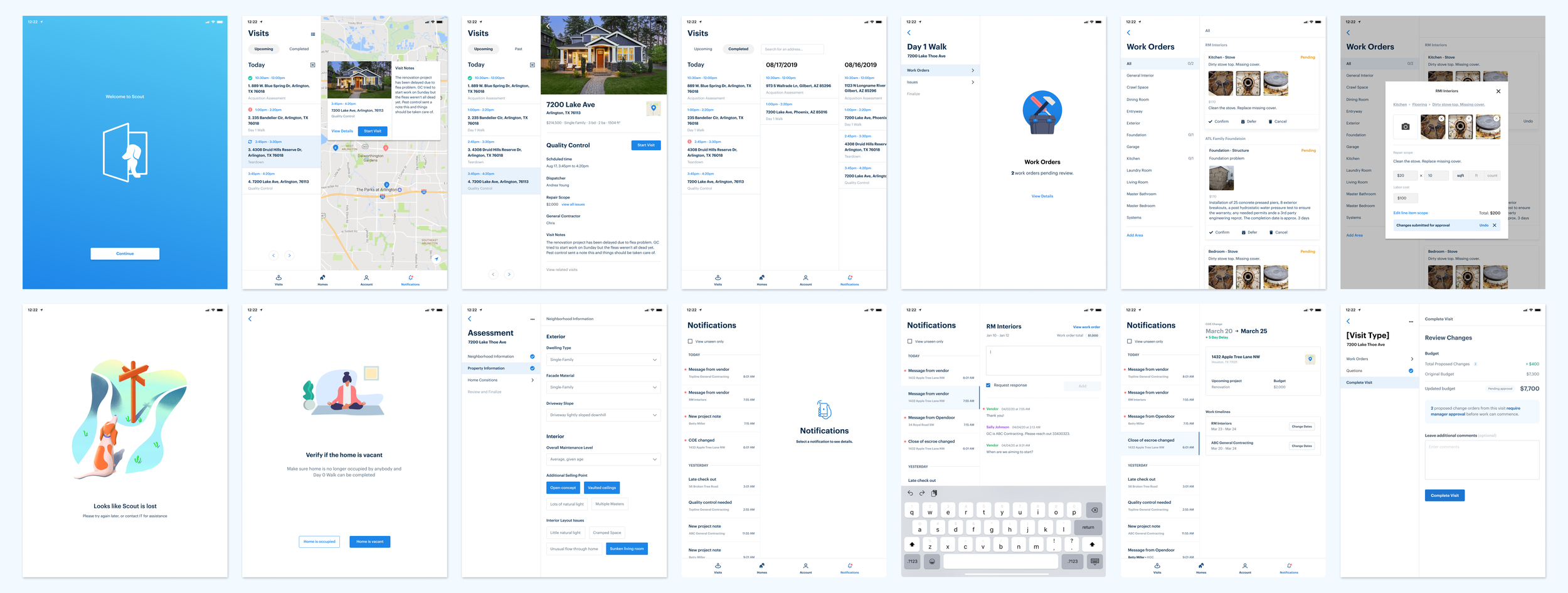Scout: A scalable solution to Opendoor’s field operations
2019 - 2020 | Sole Designer

OVERVIEW
As the first design designer at Opendoor’s Atlanta Home Operations Hub, I wore different hats on several 0-1 projects. In 2019, I was the sole designer for the end-to-end design of Scout - Opendoor’s new tool to manage operator field visits.
Scout streamlined workflows from 3 previous tools into 1, and enabled Opendoor’s largest workforce consolidation. Within the first 6 months of launch, it was already facilitating 3,000+ field visits per month while reducing project delays by half.

Opendoor had 3 distinct field roles performing various kinds of home visits. This paradigm of having different roles, tools, and ecosystems to facilitate a single home transaction proved inefficient as we grew in size. In 2019, we decided to consolidate the 3 roles into 1 Home Project Manager role, the linchpin of this consolidation was to fundamentally reimgaine the existing apps and workflows, as well as the underlying business processes.
THE CHALLENGE
PROJECT GOAL
Design a scalable solution for Home Project Managers to manage all their field visits and renovation projects, so that we can improve operator efficiency and home quality.
For weeks, I shadowed field operators in different markets, used the same tools they use, and dug into historical data to discover hidden patterns. These experiences equipped me with a profound understanding of the domain and our primary user - HPMs.
RESEARCH
When designing for a complex system, you cannot only focus on the primary users’ Jobs To Be Done and needs. You also needed to profoundly understand the experience and needs of the adjacent teams, and paint a clear picture of the end-to-end process in the entire ecosystem.
END-TO-END PROCESS
After understanding the process and user pain points, we were able to identify a list of unfulfilled user needs and process loopholes.
ROOT CAUSE PROBLEMS
THE AHA! MOMENT
I started exploring high-level concepts for the end-to-end experience. A repeating pattern started to appear in the workflows:
Capture home attributes and conditions
Identify specific issues with the home
Plan the work to be done
Perform specific actions based on visit type
Verify the work is complete and correct
With this understanding of a universal framework, I was able to create an experience and associated taxonomy that would flex to all home visit situations.

A mobile app to allow HPMs to manage field visits on the go
Revamped taxonomy of home issue and repairs
All visits and projects managed in one field app
Universal framework and UX patterns designed to scale
TEST AND ITERATE
An advantage of working with internal customers is that I can relatively easily conduct user testing. I did several rounds of prototype testing, and continued to follow up with Home Project Managers post-MVP release. This fast feedback loop also ultimately made the national roll-out and adoption much easier.
IMPACT
Since full launch in Feb 2020, Scout has become the single application for HPMs to manage all field visits and home renovation projects. It allowed us to scale up to over 3,000 field visits per month.
Compared to the old operational model and tools in 2019, Scout:
Improved operator visit efficiency by over 20% while the overall workforce was actually reduced
Improved visit on-time rate by over 15% to above 85% in most of the 21 markets at the time
Provided unprecedented clean, detailed visit data and compliance insights, which allowed the business to improve processes and make strategic decisions
























